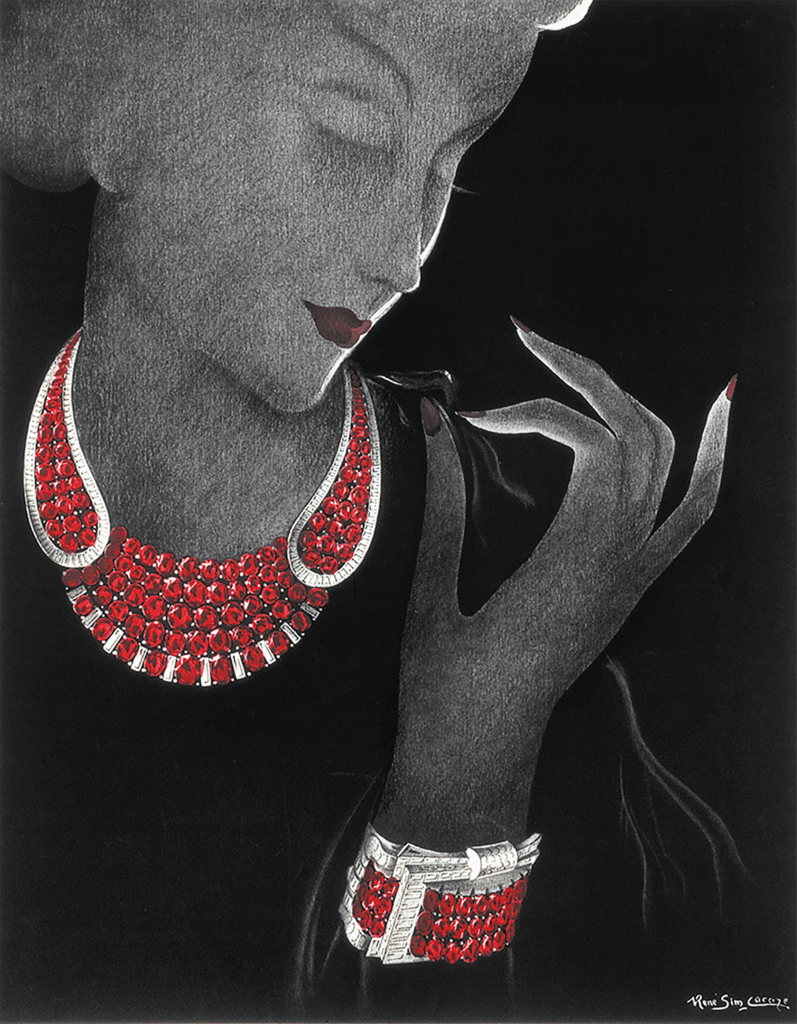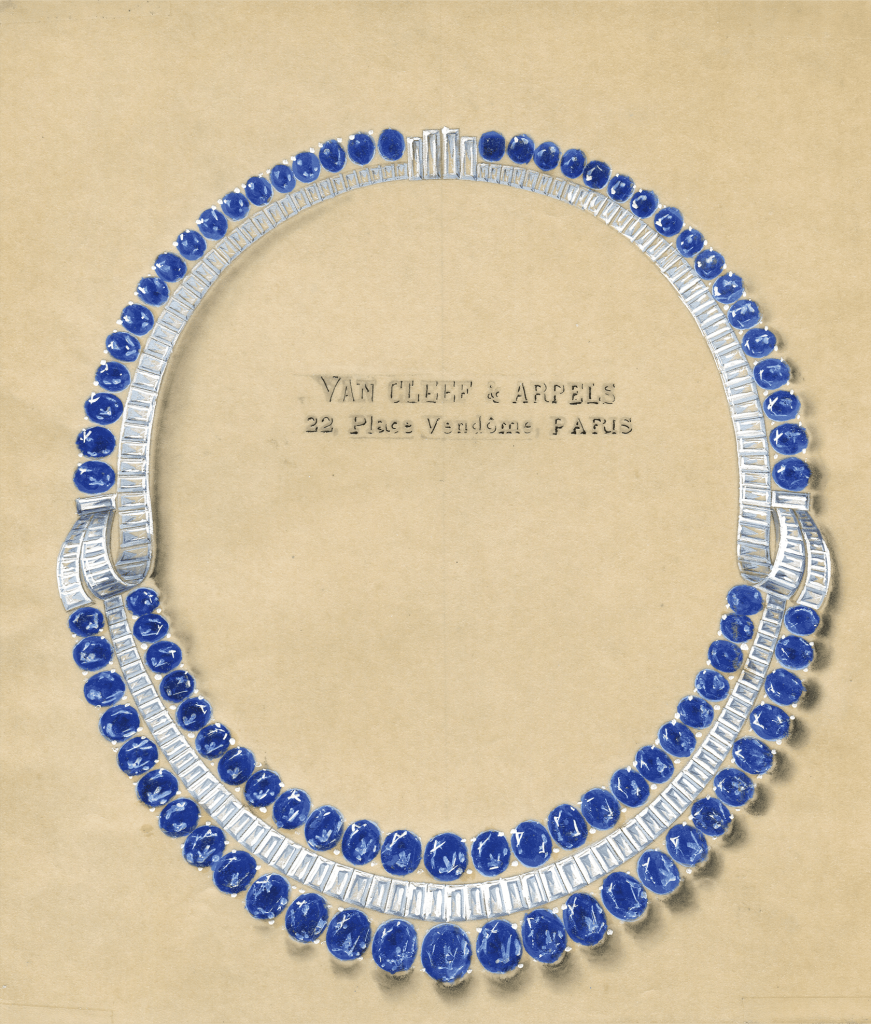
Necklace
Creation details
- Creation year 1936
- Usage Necklace
- Dimensions 370 mm
This necklace, acquired by the former singer and socialite Helene Beaumont in 1936, illustrates a return to high jewelry in the mid-1930s and represents a milestone in the evolution of the jewelry arts in the twentieth century.
It is composed of articulated quadrangular links of platinum and baguette-cut diamonds that give it immense flexibility, encircled by rows of oval rubies—two rows at the back, and three at the front interspersed with baguette-cut diamonds. There is a strong contrast between the lightness of the openwork mount of the claw-set rubies and the juxtaposing rows of calibrated diamonds. Four stylized diamond ties are placed at even distances around the necklace.
A return to opulent jewelry
While this piece adopts the bold volumes of the late 1920s, it breaks new ground in the importance it gives to precious stones. During the 1930s, jewelers continued “to shorten necklaces,”1Anonymous, “Le romantisme et les bijoux modernes,” Vogue (September 1930): 50. a trend seen as early as 1929, favoring the “collerette” or short necklace. The jewelry of the 1930s was also characterized by imposing proportions. Necklaces and bracelets were “very wide, sufficient unto themselves.”2Françoise Arnoux, “Le choix d’un bijou,” Femina (March 1, 1936): 37.

Straight lines give way to curves
Stylistically, the angular motifs and omnipresent straight lines of 1920s jewelry gave way to the curves of stylized ribbons and semi-spherical contours evoking fans. The mesh of links set with calibrated diamonds was replaced by an abundance of oval-cut gems interspersed with baguette-cut ones, while stones were set with claws to make the mount ever less noticeable. Compositions employed two colors for the most part, demonstrating a “growing preference for colored stones.” Precious stones, such as “rubies, sapphires, and emeralds” were thus offset with “diamonds, in stunning mosaic-like designs.”3Françoise Arnoux, “Le choix d’un bijou,” Femina (March 1, 1936): 37. This return to a form of opulence in jewelry in the second half of the 1930s was particularly popular. Thanks to its typology, technique, and treatment of stones, this necklace heralded a stylistic revival that was to mark the jewelry arts until the 1950s.


To go deeper



